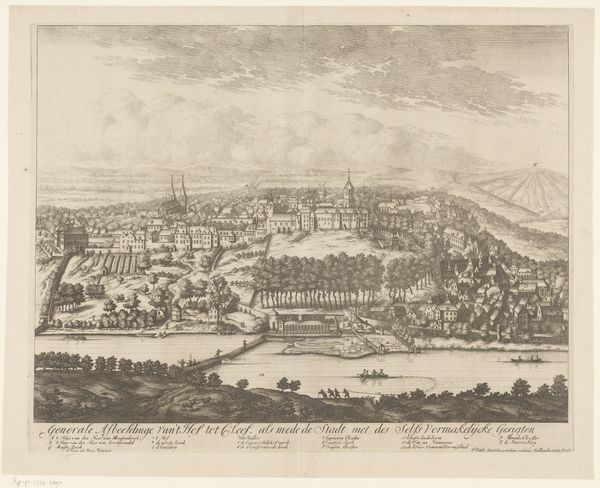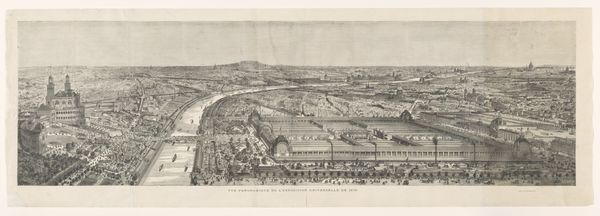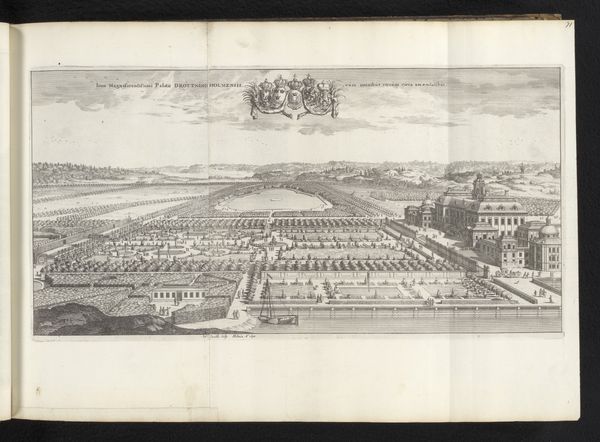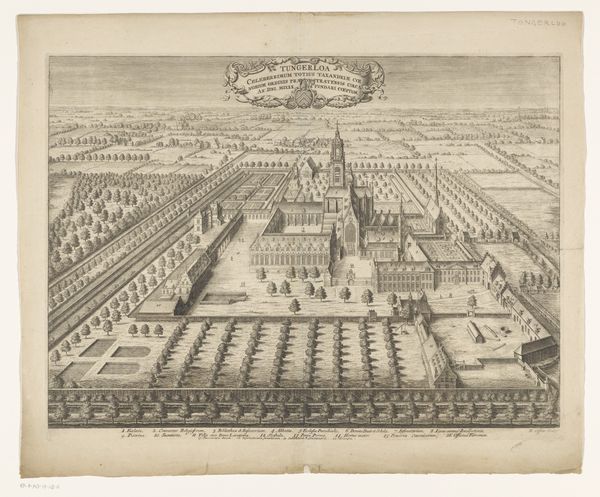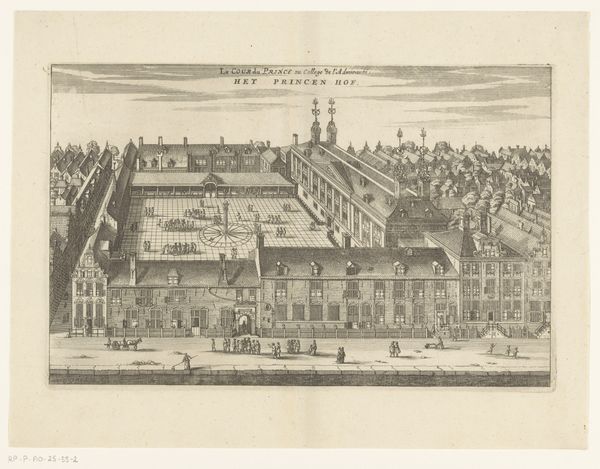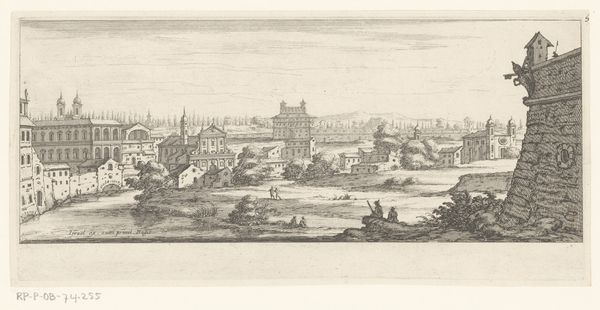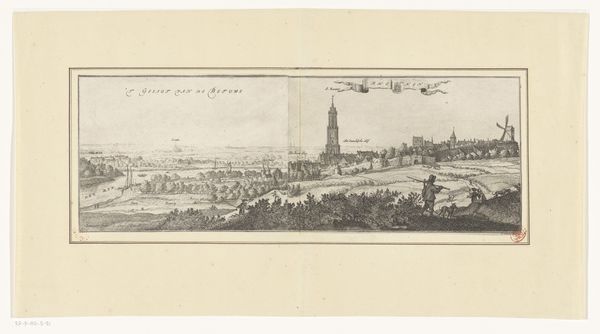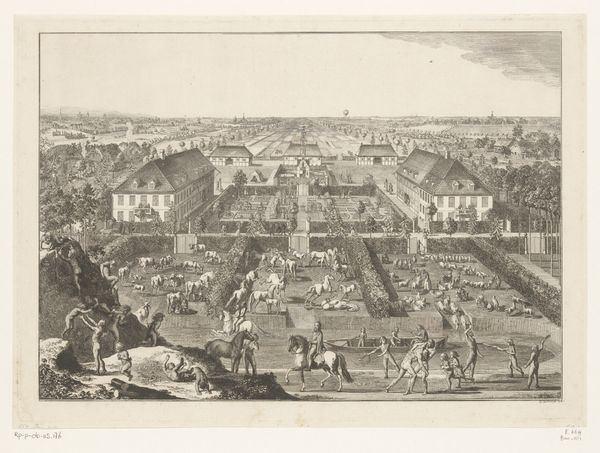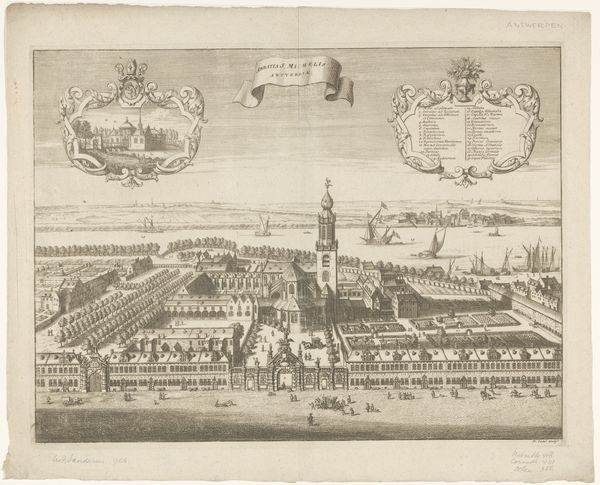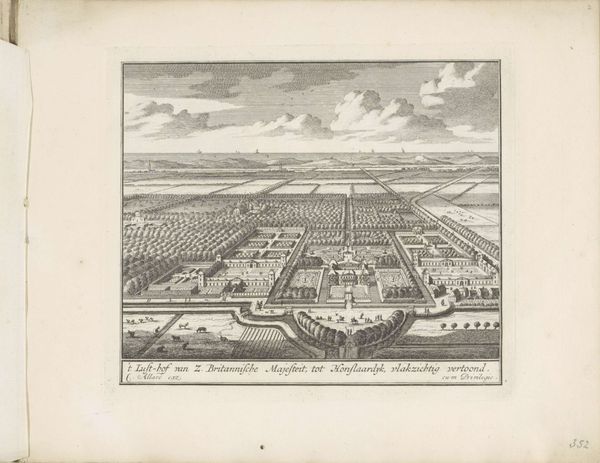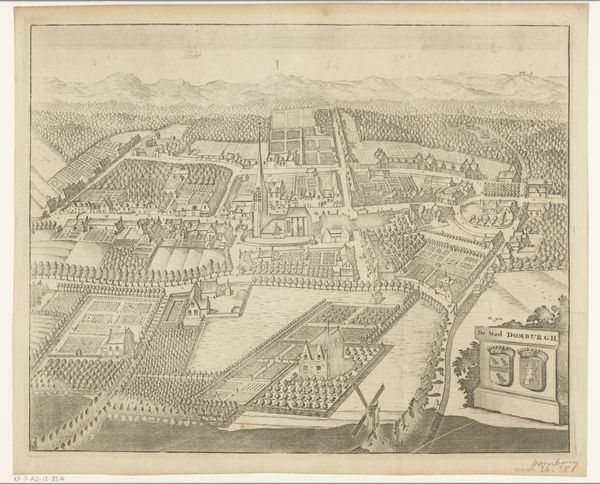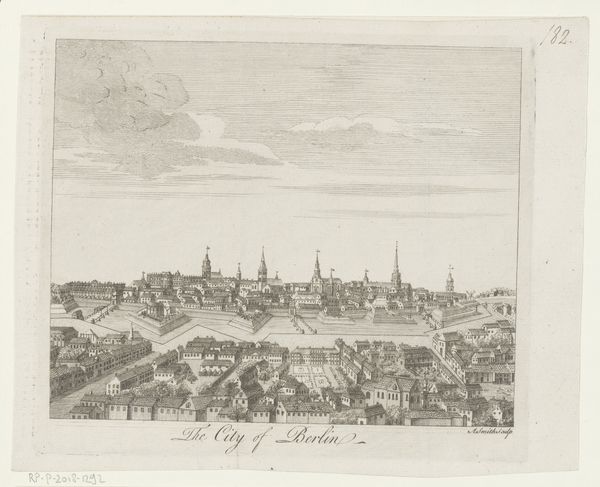
print, etching, engraving
#
dutch-golden-age
# print
#
etching
#
landscape
#
etching
#
cityscape
#
engraving
Dimensions: height 357 mm, width 597 mm
Copyright: Rijks Museum: Open Domain
Curator: Here we have "Rand van de Grote Hagen (linkerblad onderkant)," a print created around 1675. The artist, Christiaan Hagen, rendered this cityscape using etching and engraving techniques. It's currently held in the Rijksmuseum collection. Editor: My goodness, look at the sheer density! It feels like looking at a teeming ecosystem more than a town. All those tiny trees jammed together – it's almost claustrophobic. Like being surrounded by well-behaved but persistent shrubs. Curator: Well, that tightly packed nature reflects both the landscape conventions of the Dutch Golden Age and perhaps the perceived order of the time. The walled city itself is a symbol of safety, control, civilization… notice the way the lines draw your eye directly to the church. Editor: Yes, everything seems meticulously planned. Not a wild weed out of place! And that church looms, doesn't it? Almost feels like it’s breathing down the city’s neck, judging the place. Maybe I’m just projecting. I tend to see judgment everywhere these days! Curator: Perhaps not. Churches in art, especially during this era, do represent not only faith but also temporal power, moral authority, societal structure… the unshakeable presence. Think about how visual language reinforces established ideologies. The placement isn't accidental. Editor: That’s fascinating! All those symbols buried under neat little lines… I just saw a wall and a lot of greenery! So, if the wall means safety, what does it keep in… and what does it keep out? Maybe those trees aren’t just a stylistic choice… maybe they're part of the whole symbolic package. Curator: Exactly. Consider the historical context: The Dutch Republic, recently independent, defined itself by its civic order. The walls and gardens denote boundaries, security, prosperity… They project a cultivated image, both literally and figuratively. Editor: It's amazing how much meaning they could pack into what, at first glance, looks like a really detailed city plan. It reminds me that everything, even the things that seem most objective, has a slant, a point of view. Curator: Indeed. Hagen gives us more than just topography; he offers a glimpse into the values and self-image of a society. Editor: Well, now I see it differently! It’s a lot more unsettling, which somehow makes it even more interesting! I need to go stare at some weeds now. Curator: A fine way to reconsider our preconceived notions of what constitutes meaningful order.
Comments
No comments
Be the first to comment and join the conversation on the ultimate creative platform.
